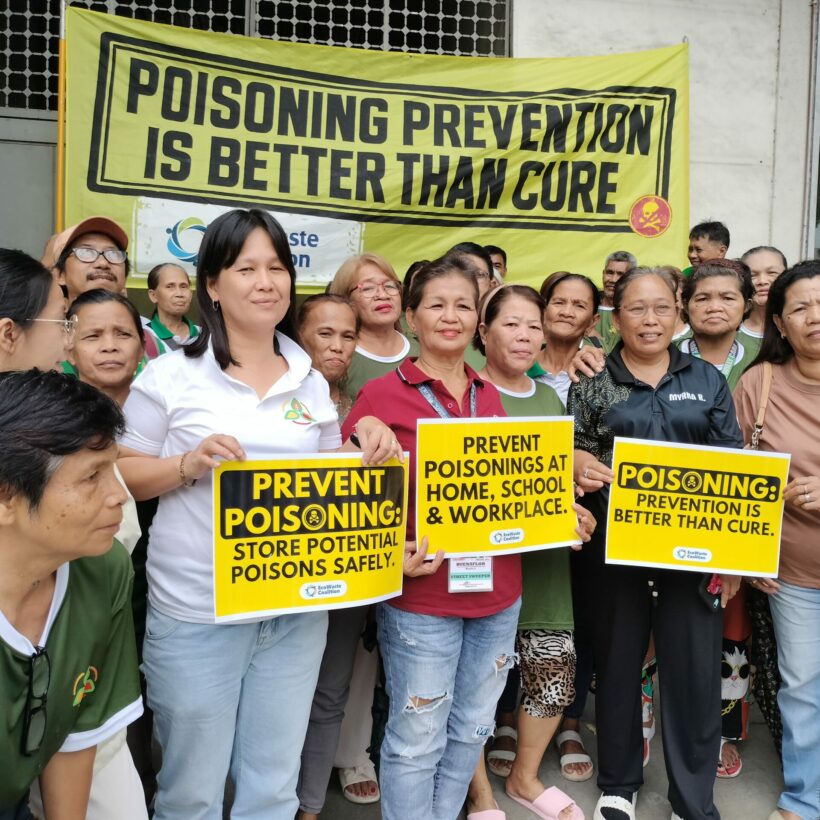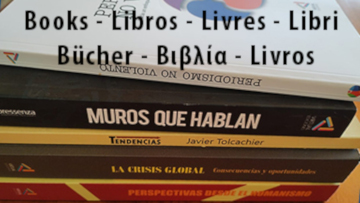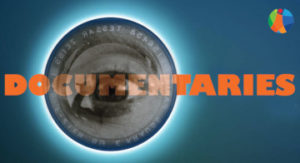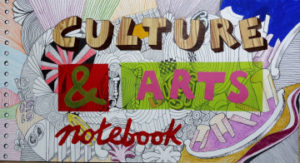“Laban sa lason” Gathering Unites Community Members in Addressing Pollution Threats
23 June 2025, Quezon City. “What you know can protect you from harm.” The EcoWaste Coalition and the Ateneo School of Medicine and Public Health – Center for Research and Innovation (ACRI) gave emphasis on information and knowledge sharing to reduce exposure to chemical pollutants that can adversely affect the health and well-being of people, especially the children, youth and women of child-bearing age.
Together with the Barangay Silangan Resource Collectors’ Association (BaSiRCA), the groups gathered over 50 community members for a “Laban sa Lason” seminar on common pollutants held in observance of the National Poison Prevention Week (NPPW) on June 22 to 28.
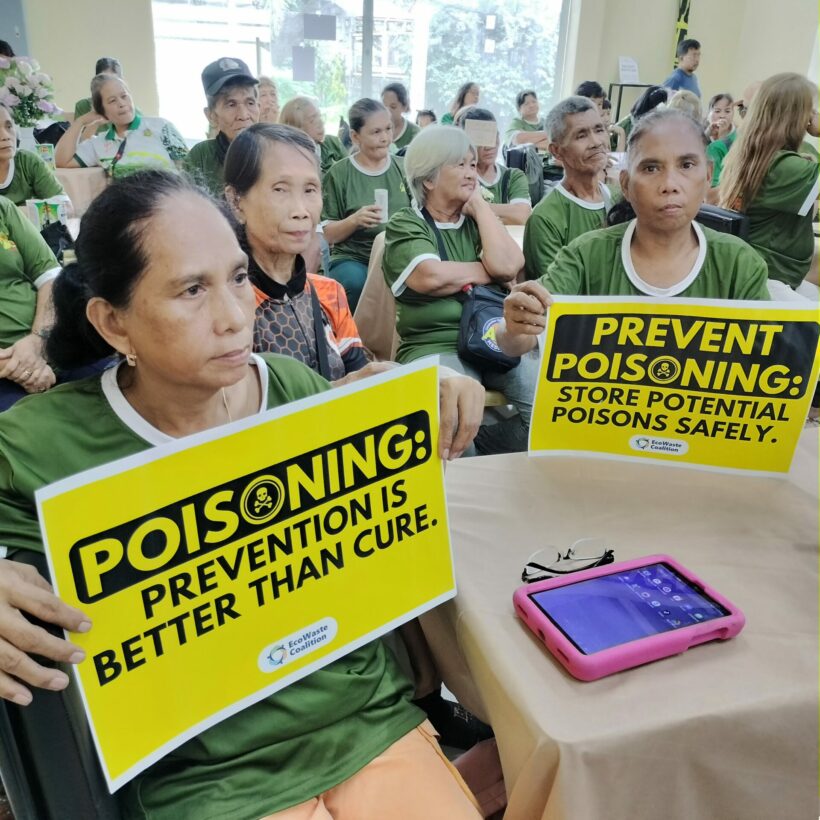
Community women get informed on common pollutants and the need to take steps to minimize exposure.
This year’s NPPW focuses on the theme “Lasong Umahon sa Pabago-Bagong Panahon: Iba’t Ibang Sektor Magsitugon” with the Philippine Society of Clinical and Occupational Toxicology (PSCOT) and the UP-Manila National Poison Management Control Center (NPMCC) at the helm.
“We are exposed to a wide range of pollutants through the air that we inhale, the food we consume, the water we drink and the different products that come into contact with our skin. By understanding what these pollutants are and how they enter and affect the body, we can avoid being exposed and reduce the risk of harmful health effects,” said Aileen Lucero, National Coordinator, EcoWaste Coalition.
“Exposure to pollutants can result in a long list of health problems, including reproductive, developmental, neurological, respiratory, and cardiovascular diseases, and even cancer. As prevention is better than cure, we need to equip ourselves with useful facts to minimize our exposure to these pollutants, some of which cannot be seen with the naked eye,” said Anna Enriquez, ACRI’s Environmental Health Program Lead for Community Engagement and Advocacy.
During the seminar, participants enhanced their understanding about the common pollutants found in the air such as particulate matter, greenhouse gases, persistent organic pollutants, and other contaminants released from a variety of sources, including diesel and gasoline vehicles, industrial facilities, waste disposal sites, smoking and vaping. As stated by the World Health Organization (WHO), “air pollution is a leading risk factor for non-communicable diseases such as heart disease, stroke, and chronic respiratory conditions.”
The group tackled commonly ingested environmental toxins and their household sources such as bisphenols (from residues in foods), flame retardants (upholstery, electronic plastic casings), perfluoroalkyl substances (food packaging, non-stick cookware), formaldehyde (compressed wood products), phthalates (PVC plastics), lead (paints, dust, plumbing materials, cosmetics, toys), mercury (cosmetics, seafood), pesticides (insect sprays, cockroach killers, residues in foods), etc.
To demonstrate the presence of chemicals of concern in common consumer and household products and the need for access to chemicals in product information, the EcoWaste Coalition screened some items using a X-Ray Fluorescence (XRF) device, which detected lead in lipsticks, flip flops, tumblers, mugs , frying pans, plastic sando bags, garden tools, and toys; and cadmium and lead in school bags and rainwear; mercury in skin lightening creams.
Also discussed were the hazards arising from waste generated by households, institutions, factories, farms and other generators, especially if the mandatory segregation of waste at source is not carried out. The unsafe handling and management of waste may result in infections, acute poisoning, physical injuries, chronic diseases and even mental health issues.
Some of the pollutants affecting the marine environment were likewise discussed, including biological, chemical, and physical contaminants from sewage and wastewater, agricultural runoff, mining operations, industrial activities, oil spills, solid waste, plastics and microplastics.
Participants were also informed about common hazard symbols or pictograms that are used to alert individuals about the presence of dangerous chemicals or materials, which can cause harm to people or the environment.
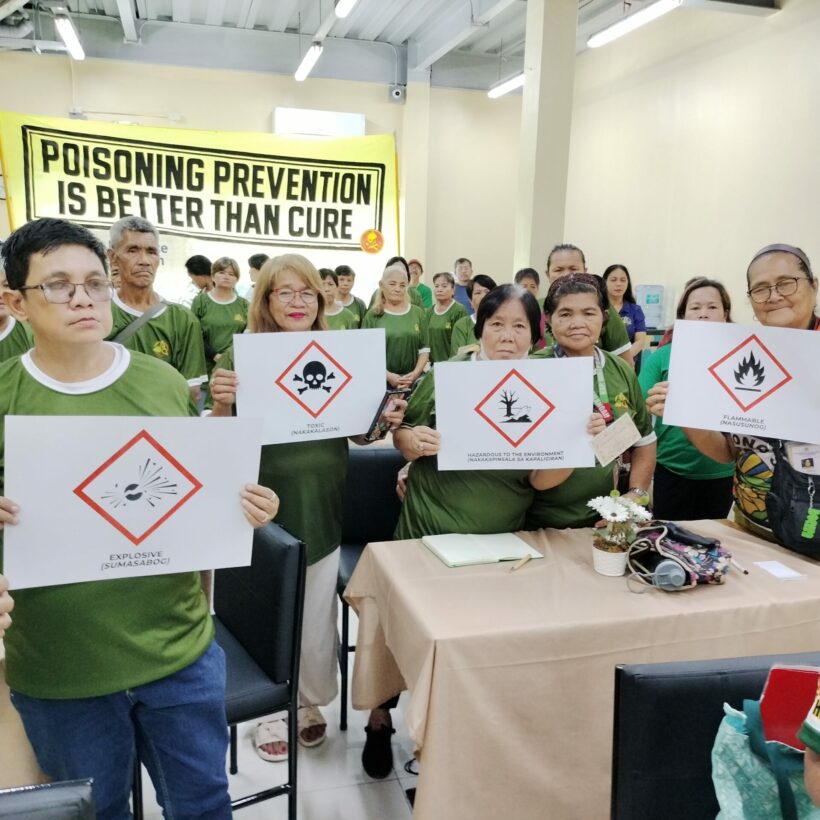
Hazard symbols are useful in communicating potential dangers and in preventing exposures, accidents and injuries.
Among these were the hazard symbols for chemicals or materials that are toxic, flammable, explosive, corrosive, oxidizing, with gas under pressure, pose serious health hazard, and are hazardous to the environment.
Finally, the “Laban sa Lason” seminar concluded with a discussion on the 6Rs to prevent pollution and poisoning (rethink, refuse, reduce, reuse, repair and recycle), noting the crucial importance of substitution and elimination of hazardous substances in the manufacturing process to produce safe and sustainable products.

Women for a poison-free household and community.
Poison Prevention Tips from PSCOT and the EcoWaste Coalition:
1. Handle, use, store and dispose of products safely at all times. Seek out eco-friendly products that do not contain hazardous substances.
2. Read the product labels carefully, be mindful of hazard pictograms and precautionary warnings, and follow safety instructions.
3. Return all products to their proper storage immediately after use.
4. Never place poisonous products in beverage and food containers. Keep them in their original containers.
5. Store food and potential poisons in separate cabinets.
6. Keep medicines, bleaching, cleaning and laundry products, e-cigarette liquid refills, insecticides, paints, varnishes and thinners, and car maintenance materials out of children’s sight and reach in a securely locked cabinet or area.
7. Never allude to medicine as “candy,” “chocolate” or any other name that appeals to a child.
8. Safely get rid of unused, unwanted or expired medicines, vitamins, and supplements.
9. Do not mix household cleaning products together to prevent the formation of dangerous fumes.
10. Never reuse pesticide and other chemical containers for storing food and water.
11. Secure the battery compartment of games, toys and other items powered by small button-cell batteries, which can cause choking and chemical risk if ingested.
12. Wash children’s toys and other playthings regularly to lessen the risk of ingesting lead-containing dust and other environmental pollutants.
13. Teach kids how to safely use art materials such as crayons, watercolors, glues, and other adhesives and remind them not to eat or drink while doing their art assignments.
14. Be aware of plants inside and outside your home as some of them may be poisonous to children, as well as pets.
If someone has been exposed to a poison, call the National Poison Management and Control Center (NPMCC) hotline number for advice and referral: (02) 85241078 or (02) 85548400, local 2311.


